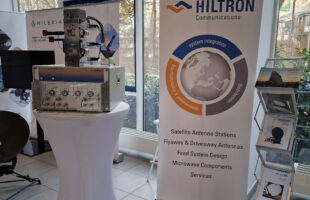Q: What are some challenges that the Satellite Communications industry would face this year?
A: First, the regulatory environment in some Asian countries still limits foreign satellite operators’ access to their domestic market. Despite huge demand for capacity in these high growth markets, their governments have set strict regulations to protect domestic operators, making entry by foreign satellite operators in these markets extremely difficult. Second, we see escalating competition from satellite operators and terrestrial networks. In the Ku-band market, supply is increasing in certain markets due to collaboration projects or satellite collocation and the use of unexploited frequency band. New technologies and increased broadband access have replaced or reduced the role of satellites for certain applications. Third, advances in compression and transmission technologies that allow the use of higher modulation and more sophisticated coding in broadcast and communications networks while driving industry growth, have added challenges to operators’ sales and marketing efforts.
Q: How have governments/ regulatory bodies been instrumental in managing spectrum?
A: In some cases they have hindered the long term development of the industry. With the deployment of wireless broadband services in some Asian countries that utilise frequencies initially dedicated for satellites, we see an encroachment on the spectrum that is critical for the long term development of satellites and its related industries. We along with others in the industry are fighting an uphill battle to protect our valuable C-band spectrum from interference caused by these networks. We are working closely with our local regulators to mobilise efforts to address this problem. This is being done in cooperation with industry organisations and other operators by jointly lobbying those governments and regulatory bodies who have identified the C-band spectrum for their wireless broadband services and encouraging them to assign the wireless services to other frequency bands.
Q: Which territories in Asia are growing their DTH services and requiring more satellite communications/broadcast services?
A: We see continued strong demand for DTH in Asia; however, in terms of market size and the level of penetration I would expect India and Indonesia to receive the most attention in the near term. In India, the competition among the six private DTH operators and digital cable systems has increased the demand from DTH operators for more satellite capacity to support the launch of HD and other value added services. In Indonesia, new DTH licensees are also demanding satellite capacity as they look to launch new services in order to grab a slice of the growing pay TV market.
Q: Which countries in Asia are territories of focus for your business this year and why?
A: Our focus will be countries that are facing the shortage of capacity that is needed to support broadcast and communications infrastructure development, such as in India and Indonesia. We also see opportunities from countries where governments are opening the market for foreign participation to boost development of their local industries.
Q: How about 4K transmission? How is your company factoring 4K in your future plans?
A: While Asia is still trying to increase the penetration of HDTV and to implement digitisation, 4K seems like a luxury to many broadcasters for the moment as it requires a substantial amount of bandwidth to distribute a single 4K channel. However, with our four in-orbit satellites and upcoming AsiaSat 6 and AsiaSat 8, all offering highpowered coverage over the Asia-Pacific region, we are ready to provide support for the delivery of 4K or any other higher resolution display format.
Q: How do you keep up with the competition in an already crowded market?
A: To remain competitive in this dynamic industry, we have to understand the changing needs of our customers. Over the years, we have continued to expand our satellite fleet and our ground infrastructure to provide more comprehensive satellite coverage and value added services to our customers. For example, offering more cost effective transmission options by introducing new services such as digital distribution platforms utilising DVB-S2 technology. In light of increasing competition within the satellite sector, we recognise the importance of providing flexible solutions to our clients along with high quality customer service to secure customer loyalty and grow our customer base.
Q: What new initiatives and plans would you embark on in Asia this year?
A: Our main focus will be the preparation for the launches of our upcoming AsiaSat 6 and AsiaSat 8 satellites. These two new satellites will bring new C-band and Ku-band capacity to help meet the growing demand for quality transponder capacity in the region. In addition, we have issued an RFP for the procurement of AsiaSat 9. AsiaSat 9 will be a replacement satellite for AsiaSat 4 at 122 degrees East, and will host GeoMetWatch’s first hyperspectral STORM sensor for collecting atmospheric and weather data over Asia and the Pacific region. With launches planned for AsiaSat 6 and AsiaSat 8 in 2014 and AsiaSat 9 in 2016, we look forward to providing a comprehensive range of satellite capacity to support a broader range of broadcasting and telecommunications service applications in the region.








